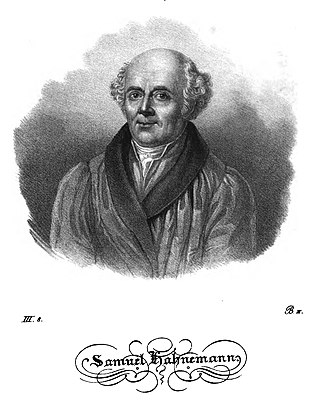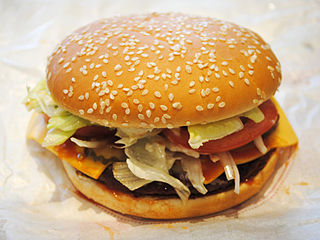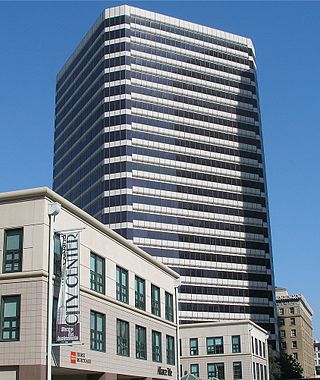
Advertising is the practice and techniques employed to bring attention to a product or service. Advertising aims to put a product or service in the spotlight in hopes of drawing it attention from consumers. It is typically used to promote a specific good or service, but there are wide range of uses, the most common being the commercial advertisement.

Homeopathy or homoeopathy is a pseudoscientific system of alternative medicine. It was conceived in 1796 by the German physician Samuel Hahnemann. Its practitioners, called homeopaths or homeopathic physicians, believe that a substance that causes symptoms of a disease in healthy people can cure similar symptoms in sick people; this doctrine is called similia similibus curentur, or "like cures like". Homeopathic preparations are termed remedies and are made using homeopathic dilution. In this process, the selected substance is repeatedly diluted until the final product is chemically indistinguishable from the diluent. Often not even a single molecule of the original substance can be expected to remain in the product. Between each dilution homeopaths may hit and/or shake the product, claiming this makes the diluent "remember" the original substance after its removal. Practitioners claim that such preparations, upon oral intake, can treat or cure disease.

Tylenol is a brand of medication, advertised for reducing pain, reducing fever, and relieving the symptoms of allergies, cold, cough, headache, and influenza. The active ingredient of its original flagship product is paracetamol, an analgesic and antipyretic. Like the words paracetamol and acetaminophen, the brand name Tylenol is derived from a chemical name for the compound, N-acetyl-para-aminophenol (APAP). The brand name is owned by McNeil Consumer Healthcare, a subsidiary of Kenvue.

Product placement, also known as embedded marketing, is a marketing technique where references to specific brands or products are incorporated into another work, such as a film or television program, with specific promotional intent. Much of this is done by loaning products, especially when expensive items, such as vehicles, are involved. In 2021, the agreements between brand owners and films and television programs were worth more than US$20 billion.

The Whopper is the signature hamburger and an associated product line sold by the international fast food restaurant chain Burger King and its Australian franchise Hungry Jack's. Introduced in 1957, the hamburger has undergone several reformulations, including changes to portion size and bread used. The hamburger is well known in the fast food industry, with Burger King advertising itself as "the Home of the Whopper" and naming its kiosk stores the BK Whopper Bar. In response to the Whopper, Burger King's competitors have developed similar products designed to compete against it.
A jingle is a short song or tune used in advertising and for other commercial uses. Jingles are a form of sound branding. A jingle contains one or more hooks and meanings that explicitly promote the product or service being advertised, usually through the use of one or more advertising slogans. Ad buyers use jingles in radio and television commercials; they can also be used in non-advertising contexts to establish or maintain a brand image. Many jingles are also created using snippets of popular songs, in which lyrics are modified to appropriately advertise the product or service.

Starburst is the brand name of a box-shaped, fruit-flavoured soft taffy candy manufactured by The Wrigley Company, which is a subsidiary of Mars, Incorporated. Starburst has many different varieties, such as Tropical, Sour, FaveREDs, Watermelon, Very Berry, Superfruit, Summer Blast and Original.

Excedrin is an over-the-counter headache pain reliever, typically in the form of tablets or caplets. It contains paracetamol (acetaminophen), aspirin, and caffeine. It was manufactured by Bristol-Myers Squibb until it was purchased by Novartis in July 2005 along with other products from BMS's over-the-counter business. As of March 2015, GSK holds majority ownership of Excedrin through a joint venture transaction with Novartis. On 18 July 2022, GSK spun off its consumer healthcare business to Haleon.

The Clorox Company is an American global manufacturer and marketer of consumer and professional products. As of 2020 the Oakland, California-based company had approximately 8,800 employees worldwide. Net sales for the 2020 fiscal year were US$6.7 billion. Ranked annually since 2000, Clorox was named number 474 on Fortune magazine's 2020 Fortune 500 list.

Coca-Cola Zero Sugar is a diet cola produced by the Coca-Cola Company.
Copywriting is the act or occupation of writing text for the purpose of advertising or other forms of marketing. Copywriting is aimed at selling products or services. The product, called copy or sales copy, is written content that aims to increase brand awareness and ultimately persuade a person or group to take a particular action.

Rolaids is an American brand of calcium and magnesium-based antacid produced by Chattem. It was invented by American chemist Irvine W. Grote in the late 1920s, and originated with manufacturing in Chattanooga, Tennessee, under one of Chattem's forerunner companies, which manufactured the brand for Warner-Lambert; Warner-Lambert merged with Pfizer in 2000.

Oscillococcinum is a homeopathic preparation marketed to relieve flu-like symptoms, although it does not provide any benefit beyond that of a placebo.

Mentadent is a brand name for a line of dental products manufactured by Unilever for its home and international markets excluding the United States and Canada where the company sold its rights to the brand to Church & Dwight Company in 2003.

Boiron is a manufacturer of homeopathic products, headquartered in France and with an operating presence in 59 countries worldwide. It is the largest manufacturer of homeopathic products in the world. In 2004, it employed a workforce of 2,779 and had a turnover of € 313 million. It is currently a member of the CAC Small stock index.

Anacin is an American brand of analgesic that is manufactured by Prestige Consumer Healthcare. Its product contains aspirin and caffeine.
Direct-to-consumer advertising (DTCA) refers to the marketing and advertising of pharmaceutical products directly to consumers as patients, as opposed to specifically targeting health professionals. The term is synonymous primarily with the advertising of prescription medicines via mass media platforms—most commonly on television and in magazines, but also via online platforms.

A sleeved blanket is a body-length blanket with sleeves usually made of fleece or nylon material. It is similar in design to a bathrobe but is meant to be worn backwards. The product has been marketed by various brands but the original company was Slanket created by Gary Clegg, then other companies like Snuggie, Snuggler, Doojo, and Toasty Wrap, copying the brand later. It comes with varying sizes, colors and qualities of materials but similar basic design.
In homeopathy, homeopathic dilution is a process in which a substance is diluted with alcohol or distilled water and then vigorously shaken in a process called "succussion". Insoluble solids, such as quartz and oyster shell, are diluted by grinding them with lactose (trituration). The founder of homeopathy, Samuel Hahnemann (1755–1843), asserted that the process of succussion activated the "vital energy" of the diluted substance, and that successive dilutions increased the "potency" of the preparation, although other strands of homeopathy disagreed.
Nurofen is a brand name range of pain-relief medication containing ibuprofen made by the British multinational Reckitt. Introduced in 1983, the Nurofen brand was acquired following Reckitt Benckiser's acquisition of Boots healthcare international in 2005 for £1.93 billion, which included Nurofen, Strepsils, and Clearasil. The brand is primarily marketed and sold in the United Kingdom, other parts of Europe, South Africa, Australia and New Zealand. In 2016 it was the biggest selling branded over-the-counter medication sold in Great Britain, with sales of £116.8 million.















